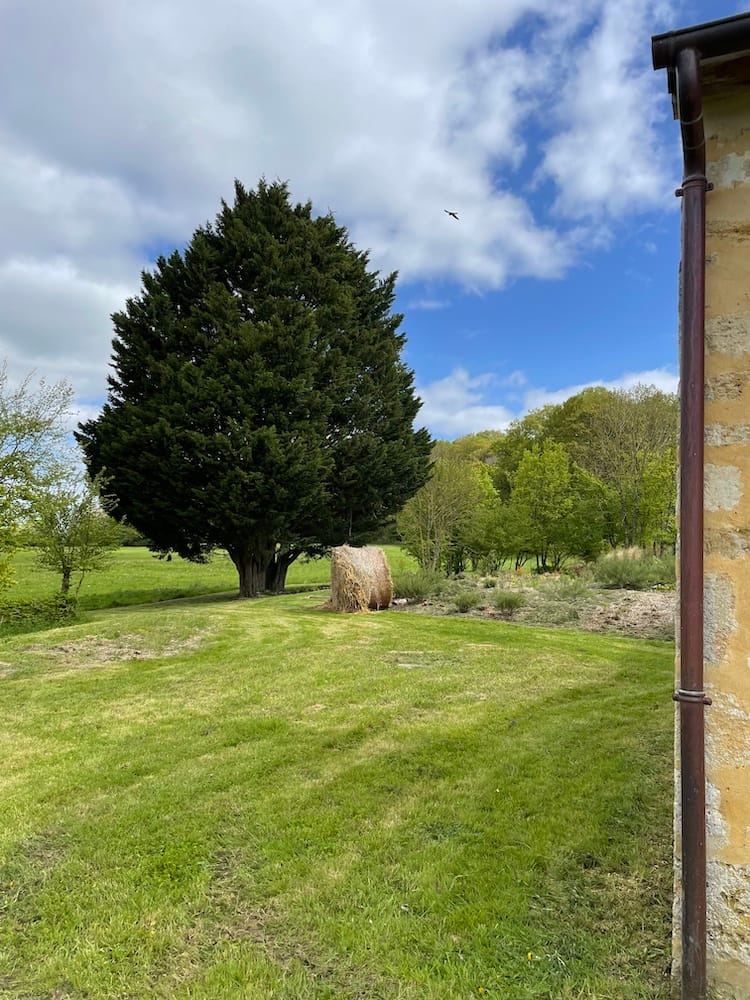For the Birds

Friday, 17 May
Either my ears have been elsewhere the last five years, or something wondrous has happened to our bird community in the Perche.
In the past I have heard light singing early spring on the morning walk with Tasha. I have sat in the garden on a warm evening and listened to birds lazily chirping themselves to sleep.
But for the last couple months, the cheerful chorus has been nothing short of symphonic pretty much pre-dawn to dusk.

And I’m not talking about the visible bird life, though it too has also been particularly active this year (and still too small to photograph with my limited equipment, so I picture bird habitats for you here). The gentle wood pigeons and doves who flap in and out of the giant cypress trees, the pair of buzzards who live in the wood and have loud private conversations for all the world to overhear. The pheasants who strut and squawk fatuously at the edge of the garden. The pair of kestrels who moved into a nook at the side of the house and started a family when the worst of the renovation noise was over. Or the few swallows that still have nests in the former stable (most of them having been evicted from their barn home when we expanded our living space).
This year a pair of ducks has settled next to the pond on the lane. They occasionally alight in the garden, at their peril.

Two tiny tits have made their nest behind some rocks in a hole in the wall of the house where a garden tap used to be.

But it’s the chorus of birds I can’t see in the treetops that has particularly caught my attention recently, the ones that are singing their hearts out for much of the day and evening.
Their joyous recital finally pushed me to download the app our friend Antony W told us about over two years ago, Merlin Cornell Lab. The free app registers which bird is singing what. When you begin a recording, one name pops up, then another and another. Those on the list that are singing the loudest pulse yellow. It’s a like an orchestra, now the string section, now the winds.
Converts are always the worst, and these days I'm hardly out the door for the morning walk when out comes my phone and on goes the app. Breathlessly I await as blackbird, blackcap, chaffinch, robin, chiffchaff, even a green woodpecker and a cuckoo, appear and pulse on the screen.

In the chemin creux, add wren, skylark, golden oriole and nightingale to the list. Then I traverse the barren stretch where the farmer savagely razed the hedgerow and wantonly destroyed bird homes. It still pains me at every single passage, but let’s not linger in that bad place today. Let’s move along, to the path between the meadow and the apple orchard, with the common whitethroat, song thrush, dunnock, linnet, long-tailed tit and oystercatcher.

And on to the wood above our house, where a short-toed treecreeper is to be detected.

So have my ears been elsewhere or has something changed?
When in doubt, go to green-guru Claire. Generally in the winter months, she told me, freezing temperatures severely reduce the birds’ food supply. By March, it’s slim pickings, and many birds die. The last few years winter droughts haven’t helped. But this year, all but gel-free temperatures and buckets of rain meant the bug banquet never stopped serving. And lots of food means lots more birds and lots more joyous song to warm the human heart (finally, an uplifting by-product of climate change).

According to the Parc Naturel Régional du Perche, there are 123 bird species in our region (plus seven migrators), so clearly the work on my app has just begun. I also learned that the bird populations here in the last decade have been helped by the rehabilitation of ponds and wetlands, making me even happier about the one we have restored and the three new ones we have created.
Here's to you, dear birds. You make my day.

You can visit my website here and follow me on Instagram here